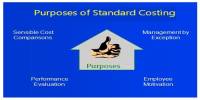A journal literally means a daily record of news, events, activities, etc. It is an essential part of objective record-keeping and allows for concise review and records-transfer later in the accounting process. In commerce it refers to a book in which any of the records of the business are first writes it is a daily register in which transactions are first analyzed into debits and credits. Transactions are recorded here in chronological order. It states the date of a transaction, which accounts were affected, and the amounts, usually in a double-entry bookkeeping method.
In another sense, a journal is a scholarly publication published periodicity by a professional association. These are published on a regular basis (monthly, quarterly, etc.) and are sequentially numbered. Journals focus on a specific discipline or field of study. Unlike newspapers and magazines, these are intended for an academic or technical audience, not general readers.
In its original meaning, it refers to a daily record of activities, but the term has evolved to mean any record of activities, regardless of time elapsed between entries, such as Diary, Daybook, Logbook, Transaction journal, etc. The definition of the journal is a diary you keep of daily events or of your thoughts or a publication dealing with a specific industry or field. For accounting purposes, it is a physical record or digital document kept as a book, spreadsheet, or data within the accounting software.
Under the double-entry system, there are mainly 7 different types of journals in accounting. Transactions are primarily recorded in the journal and thereafter posted to the ledger.
- Purchase journal – It is used for recording the credit purchase of merchandise is called a purchase journal. An asset purchased on the account is not recorded in the purchase journal.
- Sales journal – It is used for recording the credit sale of merchandise only. The cash sale of merchandise is recorded in the cash receipt journal.
- Cash receipts journal – It used for recording all types of cash receipts is called the cash receipts journal. In modem age, the introduction of cash receipts journal is in practice in medium and large size business organizations.
- Cash payment/disbursement journal – It is used for recording various transactions relating to cash payment is called a cash payment journal. Business concerns usually pay debts by cheques.
- Purchase return journal – The special journal, where purchase returns of credit purchase are recorded, is called a purchase return journal.
- Sales return journal – It is prepared from debit notes sent by the buyer with returned goods. In reply, the seller sends a credit note.
- General journal – The transactions other than the transactions recorded in cash receipts journal, cash payment special, purchase journal, sales journal, etc. are recorded in journal proper or general journal.
















